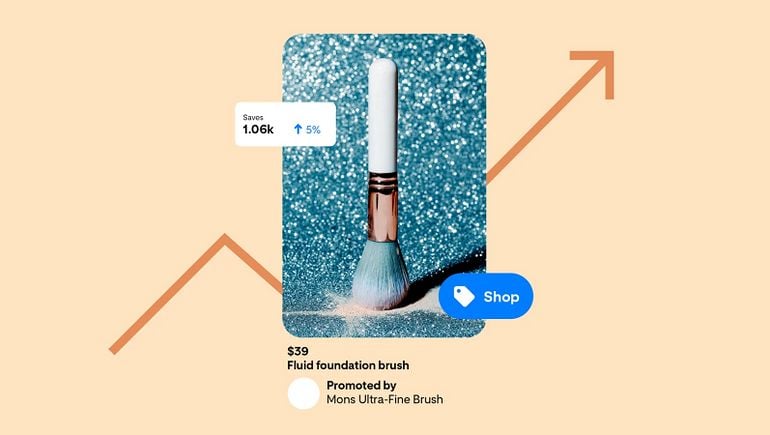Snapchat’s adding some new ad placement options, as it looks to build on its recent ad business growth, while it’ll also soon provide more insights into app usage, in order to help marketers better understand how people are engaging with different elements of the app.
First off, on ad placements. The main announcement from Snap is that it will soon launch “Sponsored Snaps”, which are pretty much like LinkedIn’s sponsored InMails in Snap form.
As explained by Snapchat CEO Evan Spiegel:
“Sponsored Snaps appear in the chat inbox as a new Snap without a push notification, and opening the message is optional. This allows advertisers to engage prospective customers all the way down the funnel all within a single ad unit; raise awareness with broad reach in the chat inbox, improve consideration with people who choose to view the Snap, and drive conversion with an in-message call-to-action.”
The Snapchat inbox has long been sacred ground, and as such, it’s been exempt from promotional materials. But now, as Snap looks to broaden its ad business, it’s taking the leap into, essentially, paid DMs.
“As we continue to evolve Sponsored Snaps, we are excited to enable more messaging features powered by generative AI and integrated into advertiser CRMs to help our partners communicate with their customers at scale. As always, your conversations with friends are private and are not used for advertising purposes.”
I’m not sure how Snap users are going to take it, but given that sponsored posts are fairly common in other social apps, it’s unlikely to be wholly disruptive, and spark a major backlash as a result.
But then again, as Meta knows, advertising in people’s private DMs is generally not welcomed, and examples like LinkedIn’s Sponsored InMail are reflective of that invasive aspect (i.e. people don’t like them).
I doubt Snap users are going to like them either, but on the other side, advertisers will definitely be keen to access the most engaged part of the app.
Whether, ultimately, that ends up being a good thing for Snap in the long run, however, remains to be seen.
Snapchat’s also adding “Promoted Places”, which will enable businesses to highlight their stores on the Snap Map.
“With Promoted Places, businesses can use the Snap Map to reach incremental customers who are exploring places nearby, and easily measure the visitation lift with our closed-loop and privacy-safe measurement.”
In addition to these new ad offerings, Snap’s also rolling out more analytics, to provide further insight into how the app drives consumer behaviors:
“In the coming months, we’re going to start surfacing more unique and actionable insights to advertisers based on the diversity of engagement on Snapchat. Privacy-safe insights around store visitation powered by the Snap Map, interactions with Lenses through our camera, and public content posts in Stories and Spotlight can help advertisers drive better performance and engagement with our community.”
Snap says that it’s going to bring these insights into a single, easy-to-use platform, in order to make it easier to action these data points for your campaigns.
As noted, the updates are part of Snap’s expanding focus on SMBs, as opposed to making bigger spending brands the key target of its ad business.
As explained by Spiegel:
“Over the years, we have found that lower funnel revenue generated by small- and medium-sized customers is more predictable and stable than upper funnel revenue. It also represents a larger long term opportunity for revenue growth. Lower funnel revenue is ‘stickier’ because it is more closely tied to key business objectives and positive returns on ad spend, and as its scale increases it becomes more predictable because it is diversified across a larger number of advertisers and sectors.”
With this in mind, Spiegel says that the focus for Snapchat’s ad business moving forward will be on growing the number of advertisers who are focused on lower funnel goals.
And that’s already proven beneficial. In its Q1 performance update, Snap reported that the number of small and medium sized advertisers in the app had increased by 85% year-over-year.
Which is a huge jump, and as such, it begs the question as to why Snap didn’t put more focus on SMBs all along? But then again, Snap’s business focus has always seemed slightly misguided.
Back in 2017, a former Snap employee said that Spiegel had once outlined to staff that the app “is only for rich people,”, and that he didn’t want to “expand into poor countries like India and Spain.”
Spiegel denied the claim, but it did, at the time, seem to align with Snap’s resistance to update its Android app, in favor of iOS, which is more popular in richer nations. Snap did eventually update its Android app in 2019, which then led to an explosion in growth in India. That, in turn, saw Snap put more focus onto user growth in developing markets as a key means to appease market analysts.
But then last year, Snap re-assessed, because while its active user count was increasing, its revenue wasn’t rising in step. Usage growth in lower revenue markets wasn’t having the bottom line impact that Snap needed, which has now led to this new re-focus onto a broader set of SMBs, as opposed to partnerships with bigger names.
So, again, Snap’s growth strategy has always seemed a little confused, or misguided, which may be reflective of Spiegel’s own immaturity as a business leader.
And maybe now, Spiegel has learned his lessons in this respect, which will see Snap’s revised focus on real money-making avenues drive ongoing success for the app.
The new approach is clearly driving better results right now, while Snap also continues to keep a finger in the AR pie, as a potential future opportunity.
The biggest risk, however, is that sponsored Snaps could annoy its core user base, and disrupt the broader feel of the app.












